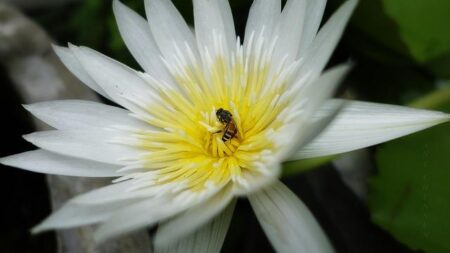India’s tribal communities, long custodians of rich healing traditions rooted in the natural world, are facing an unprecedented threat as climate change disrupts the delicate ecosystems they depend on. Once thriving with generations of herbal knowledge and spiritual practices, these indigenous healing methods are now at risk of fading away, jeopardized by shifting weather patterns, declining biodiversity, and habitat loss. This article explores how climate change is eroding the natural resources vital to tribal medicine across India, the cultural and health implications for these communities, and the urgent need for sustainable interventions to preserve this invaluable heritage.
India’s Tribal Communities Confront the Erosion of Ancestral Healing Practices
For centuries, indigenous healers among India’s tribal communities have relied on an intricate knowledge of local flora and spiritual rituals to treat ailments and maintain wellness. However, climate change is rapidly altering the ecosystems these traditions depend on, leading to the disappearance of crucial medicinal plants and disrupting age-old healing practices. Rising temperatures, unpredictable rainfall patterns, and encroaching deforestation have pushed many communities to the brink of losing not just their natural resources but also the cultural heritage tied to them.
Several tribes have reported a decline in key healing plant species such as Giloy, Neem, and Ashwagandha, which has forced a struggle to preserve knowledge passed down through generations. Efforts to document these practices through local initiatives and NGOs face challenges due to scarce funding and lack of comprehensive support. Below is a snapshot of the impact on medicinal flora across different regions:
| Region | At-risk Medicinal Plants | Primary Climate Threat |
|---|---|---|
| Central India | Giloy, Tulsi | Drought & Heatwaves |
| Northeast India | Neem, Bamboo | Heavy Rainfall & Flooding |
| Western Ghats | Ashwagandha, Amla | Deforestation & Soil Erosion |
- Knowledge loss: Younger generations show decreased interest in ancestral healing methods.
- Community resilience: Some tribes are innovating by integrating modern science with traditional healing.
- Policy gaps: Lack of representation in environmental legislation hinders protections for medicinal resources.
Climate Change Disrupts Sacred Plant Ecosystems Essential to Indigenous Medicine
Across India’s diverse tribal regions, the natural habitats of many sacred plants revered for their medicinal properties are rapidly deteriorating. Rising temperatures, unpredictable rainfall patterns, and shifting monsoon cycles have led to habitat loss and altered growth cycles, putting species like Nagarmotha, Giloy, and Amla at risk. The result is a cascading effect on indigenous healthcare systems, which rely heavily on these botanicals to treat ailments ranging from common colds to chronic conditions. Elder healers express growing concern as younger generations lose both access to the plants and opportunities to learn the ancient practices.
Climate-induced scarcity has forced tribal communities to adapt, often turning to costly external alternatives or abandoning traditional remedies altogether. This trend threatens not only biodiversity but also cultural heritage embedded in plant-based healing knowledge. The table below highlights some key medicinal plants and how changes in local climate have affected their availability:
| Plant | Traditional Use | Climate Stress | Impact on Availability |
|---|---|---|---|
| Nagarmotha | Anti-inflammatory | Reduced rainfall | Shrinking wild populations |
| Giloy | Immunity booster | Temperature rise | Delayed flowering periods |
| Amla | Vitamin C source | Soil depletion | Lower fruit yield |
- Disrupted plant cycles: Affecting harvest times critical to medicine preparation.
- Reduced genetic diversity: Threatening long-term resilience of ecosystems.
- Cultural erosion: Loss of traditional knowledge as access declines.
Urgent Policy Measures Needed to Preserve Tribal Knowledge and Protect Biodiversity
India’s tribal communities, custodians of invaluable indigenous knowledge, face an unprecedented threat as climate change disrupts ecosystems and erodes traditional healing practices. The accelerating loss of medicinal plants, coupled with diminishing access to ancestral lands, demands immediate and targeted government intervention. Without robust policy frameworks that prioritize the protection of tribal intellectual property and biodiversity, this heritage risks vanishing within a generation. Strengthening community-led conservation efforts and integrating tribal wisdom into national biodiversity strategies must be paramount objectives for policymakers.
Effective measures should focus on recognition, protection, and promotion of tribal healing traditions. Key action points include:
- Establishing legal safeguards against biopiracy and unauthorized exploitation of indigenous knowledge
- Supporting tribal participation in environmental decision-making processes
- Funding documentation and scientific validation of traditional medicinal plants
- Creating biodiversity reserves co-managed by tribal communities
| Policy Area | Action Required | Potential Impact |
|---|---|---|
| Legal Protection | Enforce intellectual property rights | Prevent exploitation of tribal knowledge |
| Conservation | Promote community-managed reserves | Preserve medicinal biodiversity |
| Capacity Building | Train youth in traditional practices | Ensure generational knowledge transfer |
In Conclusion
As climate change continues to disrupt ecosystems and livelihoods, India’s tribal communities face an urgent battle to preserve their ancestral healing traditions. These practices, deeply intertwined with local biodiversity and cultural identity, are threatened by shifting weather patterns, habitat loss, and resource scarcity. Without concerted efforts to document and support these age-old knowledge systems, invaluable cultural heritage-and the health and resilience of tribal populations-may be lost forever. The challenge now lies in fostering inclusive climate policies that recognize and safeguard the intricate connections between indigenous knowledge and environmental stewardship.




